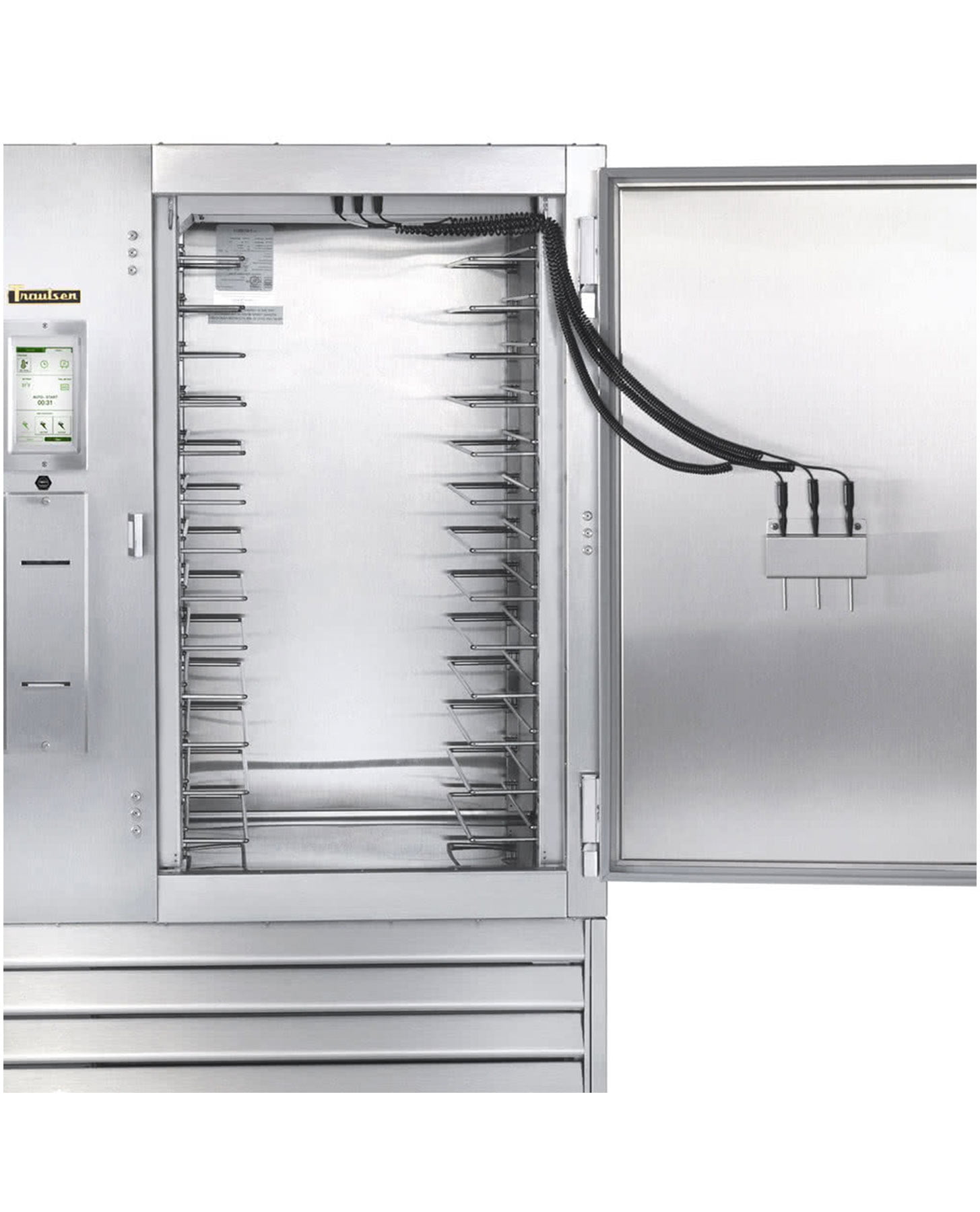Consistent Results. Now available at the tip of your finger.

Two Modes. To use the blast chiller, the operator simply selects one of two modes on the Epicon visual interface touch screen—or inserts our ProbeChill—to begin the chilling process. This ease of use not only improves food safety over regular refrigeration, but it also ensures high-volume production accuracy. So, when preparing large quantities, you can achieve consistent, repeatable results.
Auto Menu can be launched in two ways. The user can insert the ProbeChill, and the blast chiller will launch the Auto Menu function, using the factory default standard temperature setting of 37˚F. The chiller will beep when the food has reached 37˚F. If the operator would rather chill by set time, pressing “EZ TIME” once the ProbeChill is inserted will ensure the food is chilled within the factory default time of 90 minutes. For simple menu recall or for items where using the ProbeChill could affect final presentation, select Auto Menu and pull up a saved product by name. Press “Start” and the chiller does the rest. It really is that simple.
With the Manual Menu, you have complete control over the blast chiller operation. The Epicon visual interface keeps things simple, however, with a series of guided steps. To start with, the chef selects the operating program “by temp,” “by time” or “by preset recipe.” Next, the chef enters the product name—lasagna, for example—as well as his or her username. In this example, the chef selected “by temp.” Using the down arrow, the chef enters the desired end temperature (in this case, 32˚F). Next, the chef can select one of four “chill methods.” The blast chiller will use “standard” as the default chill setting, unless the user touches a chill-setting icon after entering the time. Finally, the chef presses “Start.” As with Auto Menu, key batch data will be displayed on the run screen. So, at any time, anyone can check start and finish temperature, chill time, product name selected and finally, the username assigned to the batch.
Easy networking. The on-board printer enables you to meet HACCP documentation requirements as your food progresses through the Danger Zone. With the added option of our label printer, you can also create adhesive labels to apply to your products’ containers. With clear chill data for your staff and the health inspector, say so long to hard-to-read handwritten labels or operator error. Traulsen makes reporting automatic. But it takes more than that to be HACCP compliant. You also have to be able to determine which employee handled the product each step of the way. That’s why Traulsen’s Epicon visual interface lets you assign individual operator ID names or numbers for later identification.
Four different settings give you complete flexibility. When using Manual Menu mode, the saved chill method is the automatic default chill setting. If you tell your prep cook you’re in a time crunch, however, he or she can easily select “Speed” from the chill-method screen, cutting chill time by approximately 10 percent.
1. Standard, for basic operation
2. Speed, reduces chill time by approximately 10% for high-volume operations
3. Delicate, retains moisture and food quality during chill cycle
4. Energy, uses approximately 10% less energy than standard per cycle
Our blast chillers are also better for the environment because they’re built to last, so the product life cycle is significantly longer. Our heavy-duty construction is designed to hold up in your demanding environment. The stamped metal will not crack or break. Finally, our one-piece sides and lack of exterior fasteners prevent soil buildup and improve overall cabinet strength, making sure the blast chiller stands up to years of heavy use.
Chilling in as little time as possible is critical. That’s why our cyclonic airflow system creates a horizontally moving curtain of air that extends from the top of the chiller to the bottom. Like other TempAssure airflow systems, the air is circulated to maintain balanced product temperatures. These two innovations ensure that food can be chilled in approximately 90 minutes. You can also adjust the product holding temperatures and product chill endpoint to preserve the individual characteristics of your foods. For salads and fruits, this means that the constant cool airflow ensures food remains consistently fresh.
TBC1H
Roll In & Roll Through Blast Chiller
SPEC SHEET
TBC2H
Roll In & Roll Through Blast Chiller
SPEC SHEET
TBC13
Reach in Blast Chiller
SPEC SHEET
TU Series
Undercounter Quick Chiller
SPEC SHEET




